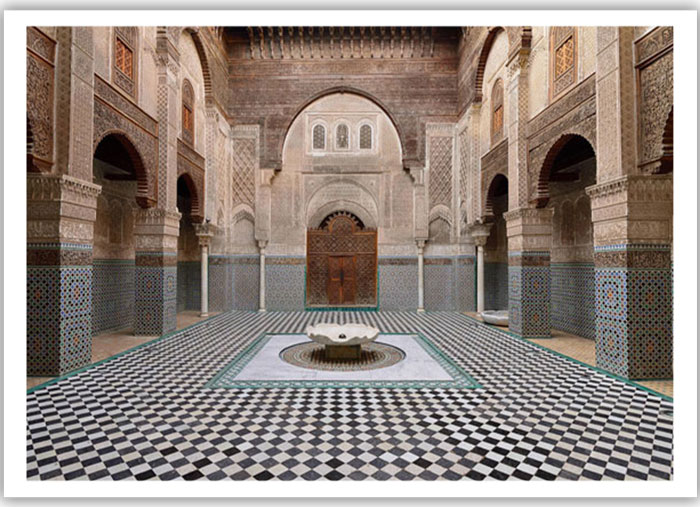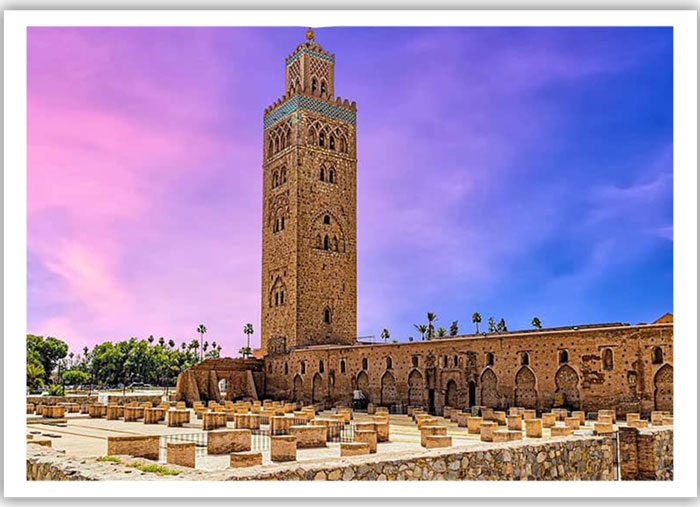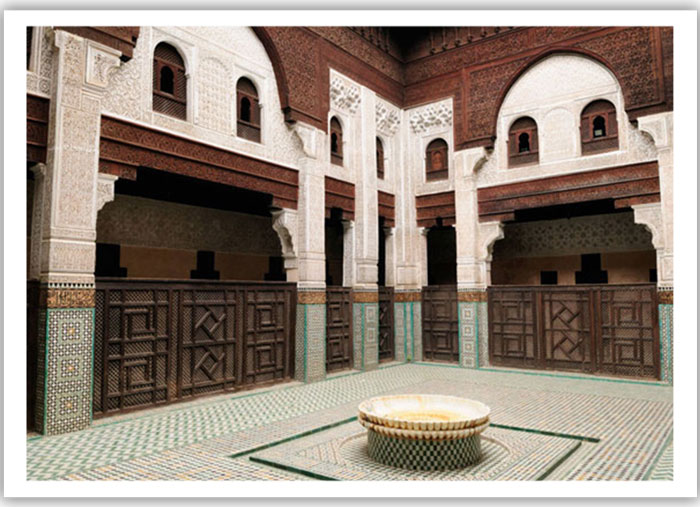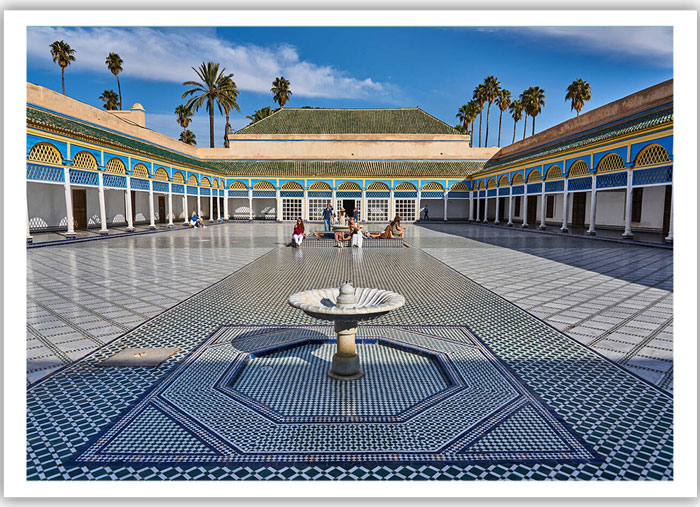Fes vs Marrakech: Which Moroccan City Is Better for History & Culture Lovers
Morocco is a country steeped in history and culture, with cities that each tell their own unique story. From bustling medinas and grand palaces to centuries-old artisan traditions, every city offers a distinct cultural experience.
Fes vs Marrakech is a question many history and culture lovers face when planning a Moroccan adventure. Both cities are rich in heritage: Fes, the spiritual and intellectual heart of Morocco, immerses visitors in authentic historical experiences, while Marrakech, the “Red City,” dazzles with stunning architecture, lively markets, and dynamic cultural events. This guide compares the two cities across landmarks, museums, crafts, cuisine, and overall atmosphere to help you decide which city is the perfect choice.
Historical Significance
When it comes to history, both Fes and Marrakech are living museums, but they offer very different experiences for history and culture lovers.
Fes:
Known as Morocco’s spiritual and intellectual capital, Fes is a city where the past feels almost tangible. Its medina, Fes el-Bali, is one of the world’s largest car-free urban zones and a UNESCO World Heritage site. Wandering through its narrow, winding streets is like stepping back in time, with centuries-old madrasas, bustling souks, and intricately decorated mosques at every turn. Fes is also home to the University of Al Quaraouiyine, founded in 859 AD, widely recognized as the oldest continuously operating university in the world. Traditional crafts, such as leather tanning, pottery, and weaving, have been preserved for generations, giving visitors an authentic glimpse into Morocco’s past.

Marrakech:
In contrast, Marrakech, known as the “Red City,” offers a visually striking and diverse historical landscape. Founded in the 11th century, the city’s historic medina, city walls, and palaces are recognized as a UNESCO World Heritage Site. Iconic landmarks such as the Koutoubia Mosque, Saadian Tombs, and Bahia Palace showcase the opulence of Morocco’s past dynasties. While the medina is smaller and more tourist-friendly than Fes, it is alive with cultural energy and historical storytelling, blending traditional Moroccan heritage with contemporary life. Many of the city’s crafts, music, and culinary traditions are part of Morocco’s Intangible Cultural Heritage, allowing visitors to experience history that is both tangible and living.

Comparison:
-
Age and preservation: Fes’s medina is older and has retained much of its medieval charm, making it ideal for travelers seeking deep historical immersion. Marrakech offers a slightly younger but equally impressive historical narrative with a more visually dramatic cityscape.
-
Cultural depth: Fes emphasizes tradition, scholarship, and artisanal crafts. Marrakech blends history with spectacle, combining architecture, gardens, and the vibrant life of a bustling city.
For history and culture lovers, choosing between Fes and Marrakech often comes down to the type of historical experience desired: Fes for the quiet, immersive past, and Marrakech for a visually stunning, diverse historical journey.
Architecture & Landmarks
When it comes to architecture, Fes and Marrakech offer distinctly different experiences, reflecting their unique histories and cultural influences.
Fes:
Fes is renowned for its medieval architecture and well-preserved historical landmarks. The medina, Fes el-Bali, is a maze of narrow streets lined with centuries-old buildings, ornate madrasas, and intricately carved doorways. Notable landmarks include the Bou Inania Madrasa, famous for its exquisite Marinid architecture, and the Al Quaraouiyine Mosque, a center of learning for over a millennium. Fes is also famous for its traditional tanneries, where visitors can witness age-old leather dyeing techniques that have remained largely unchanged for centuries. The city’s architecture emphasizes authenticity and preservation, making it a dream destination for travelers seeking an immersive historical experience.

Marrakech:
Marrakech, in contrast, is known for its bold, visually striking architecture. The city’s iconic Koutoubia Mosque dominates the skyline with its minaret, while Bahia Palace and the Saadian Tombs showcase intricate Moroccan craftsmanship and opulent design. Marrakech’s riads—traditional houses with inner courtyards—offer a glimpse into Moroccan residential architecture, blending comfort with historical charm. The city also features lush gardens like Jardin Majorelle, combining natural beauty with architectural elegance. Marrakech’s architecture reflects a blend of Islamic, Berber, and Andalusian influences, offering both grandeur and variety for cultural explorers.
Comparison:
-
Fes: Best for travelers who want authenticity, medieval charm, and a deep dive into traditional Moroccan design.
-
Marrakech: Best for those who appreciate dramatic visual experiences, grand palaces, and a mix of historic and contemporary elements.
In short, Fes feels like stepping back in time, while Marrakech offers a bold, dynamic encounter with Moroccan history through its stunning landmarks.

Museums & Cultural Institutions
For history and culture lovers, the museums and cultural institutions in Fes and Marrakech offer a deeper understanding of Morocco’s artistic, intellectual, and historical heritage.
Fes:
Fes is a city where tradition reigns supreme, and its museums reflect centuries of craftsmanship and scholarship. The Dar Batha Museum, housed in a former royal palace, displays an impressive collection of Moroccan arts, including ceramics, textiles, and woodwork. Another must-visit is the Nejjarine Museum of Wooden Arts & Crafts, located in a beautifully restored funduq (traditional inn), where visitors can explore the city’s woodworking heritage and learn about the artisans who have preserved these skills for generations. Fes’s museums focus heavily on history, offering an intimate look at Morocco’s cultural evolution.
Marrakech:
Marrakech, on the other hand, combines historical and contemporary perspectives in its museums and cultural spaces. The Marrakech Museum, set in a former palace, showcases Moroccan art, historical artifacts, and stunning architecture. The Maison de la Photographie offers a visual journey through Morocco’s past with vintage photography that captures the country’s social and cultural history. Marrakech also hosts contemporary art galleries and cultural centers, blending traditional Moroccan heritage with modern creative expression.
Comparison:
-
Fes: Ideal for travelers seeking an authentic, historically focused museum experience that emphasizes traditional arts and scholarship.
-
Marrakech: Perfect for those who want a mix of historical insights and modern cultural exploration, with opportunities to see both heritage and contemporary art.
In essence, Fes immerses visitors in centuries-old craftsmanship and scholarly history, while Marrakech offers a more eclectic cultural experience, merging Morocco’s past and present in a vibrant way.
Traditional Crafts & Artisans
One of the highlights for history and culture lovers visiting Morocco is the opportunity to witness traditional crafts being practiced as they have been for centuries. Both Fes and Marrakech offer rich artisan experiences, but in very different ways.
Fes:
Fes is often considered the artisan capital of Morocco. Its medina is filled with workshops where craftsmen continue centuries-old traditions. Visitors can explore leather tanneries, where hides are dyed using natural pigments, or watch master ceramicists shaping intricate patterns on plates and tiles. Fes is also known for its metalwork, wood carving, and weaving, often done in small, family-run workshops. Many of these artisans have passed their skills down through generations, giving Fes a deeply authentic, heritage-focused atmosphere. Walking through the medina, the sights, smells, and sounds of these traditional crafts create an immersive experience that transports visitors back in time.
Marrakech:
Marrakech also boasts a vibrant artisan scene, though it is more oriented toward tourism and interactive experiences. Visitors can watch carpet weaving, pottery, and jewelry making, often with opportunities to participate in workshops. The city’s artisan cooperatives offer insight into Moroccan craft traditions, and markets like the souks of Marrakech provide a dynamic environment to see crafts being sold and traded. While Marrakech’s craft scene is lively and colorful, it tends to mix tradition with contemporary trends, making it slightly less “frozen in time” than Fes.
Comparison:
-
Fes: Best for travelers seeking authenticity and a deep dive into centuries-old artisan techniques.
-
Marrakech: Ideal for those looking for interactive experiences and a vibrant, colorful craft culture that blends tradition and modernity.
In short, Fes offers a heritage-focused journey through Morocco’s artisanal past, while Marrakech provides a lively, engaging glimpse into both traditional and contemporary crafts.
Discover Morocco’s Cultural Treasures Firsthand
Step into the heart of Morocco’s history and culture with immersive experiences in Fes or Marrakech. Wander centuries-old medinas, explore grand palaces, and meet artisans who have preserved their crafts for generations. Whether you crave the quiet authenticity of Fes or the vibrant energy of Marrakech, expert guides and curated cultural tours ensure an unforgettable journey.
Book your Moroccan cultural adventure today and experience the rich heritage that awaits in Fes and Marrakech.
Festivals & Cultural Events
Experiencing a city’s festivals and cultural events is one of the most exciting ways to connect with its history and traditions. Fes and Marrakech each host events that showcase Morocco’s rich cultural tapestry, though the type and atmosphere of these events differ.
Fes:
Fes is home to some of Morocco’s most iconic cultural festivals, attracting visitors from around the world. The Fes Festival of World Sacred Music is a highlight, bringing together artists and musicians to celebrate spiritual and traditional music in historical venues across the city. Local religious and seasonal festivals also offer glimpses into Moroccan traditions that have been preserved for centuries, providing an intimate look at the country’s spiritual and cultural life. For history and culture lovers, attending a festival in Fes is a chance to see tradition alive in its most authentic form.
Marrakech:
Marrakech’s festivals are vibrant and eclectic, reflecting the city’s mix of history, art, and contemporary culture. The Marrakech International Film Festival draws global attention, showcasing films from around the world while celebrating Moroccan cinema. Other events, like cultural fairs and music festivals, take place throughout the year, often combining historical traditions with modern artistic expression. Marrakech’s festivals tend to be lively and visually spectacular, offering high-energy experiences in iconic city landmarks.
Comparison:
-
Fes: Best for travelers seeking authentic, historically rooted cultural celebrations with a focus on traditional music, rituals, and local heritage.
-
Marrakech: Ideal for those looking for dynamic, diverse festivals that blend Moroccan history with contemporary arts and global cultural influences.
In essence, Fes allows visitors to experience Morocco’s cultural heritage in a more contemplative, tradition-focused way, while Marrakech provides a colorful, high-energy immersion into both the past and present of Moroccan culture.
Food & Culinary Heritage
Moroccan cuisine is a living reflection of the country’s history and culture, and both Fes and Marrakech offer exceptional culinary experiences for history and culture lovers.
Fes:
Fes is known for its traditional Moroccan cuisine, often prepared according to recipes that have been passed down through generations. The city is famous for heritage dishes such as bastilla (a sweet and savory pie), slow-cooked tagines, and harira soup, especially during Ramadan. The medina is home to local food markets where spices, grains, and fresh produce are sold much as they were centuries ago. Fes also offers cooking classes in traditional homes or riads, allowing visitors to learn historic recipes and culinary techniques in an authentic setting.
Marrakech:
Marrakech offers a more vibrant and eclectic food scene, blending tradition with street food culture and modern culinary innovations. In the bustling Jemaa el-Fnaa square, food stalls serve everything from grilled meats to sfenj (Moroccan donuts), providing an energetic and sensory-rich dining experience. Marrakech also has numerous riads and restaurants offering traditional dishes with a modern twist, as well as guided food tours that explore both historical recipes and contemporary Moroccan cuisine.
Comparison:
-
Fes: Ideal for those seeking an authentic, heritage-focused culinary experience rooted in centuries-old Moroccan traditions.
-
Marrakech: Perfect for travelers who want a lively, diverse food scene that combines history with modern flavors and street-food energy.
In short, Fes offers a taste of Morocco’s historical cuisine in an intimate, traditional setting, while Marrakech presents a dynamic and bustling culinary experience that reflects both the city’s past and present.
Atmosphere & Immersion
The overall atmosphere of a city can make or break a cultural experience, and Fes and Marrakech each offer distinctly different vibes for history and culture lovers.
Fes:
Fes is often described as a city frozen in time. Its narrow, winding streets, ancient medina, and quiet courtyards create an intimate, contemplative atmosphere that immerses visitors in Morocco’s past. The slower pace of life in Fes allows travelers to linger in historical sites, explore artisan workshops, and absorb the cultural richness without feeling rushed. This makes Fes particularly appealing to those who want a deep, reflective cultural experience, where history is not just seen but felt.
Marrakech:
Marrakech, by contrast, is a city of energy and spectacle. The bustling souks, lively squares like Jemaa el-Fnaa, and vibrant street life create a sensory-rich environment that engages visitors at every turn. The city’s mix of historic sites, gardens, and modern cultural venues makes it a place where history and contemporary life coexist. Marrakech offers a dynamic immersion, ideal for travelers who enjoy being in the center of cultural activity and want a lively, colorful experience.
Comparison:
-
Fes: Best for travelers seeking a tranquil, historically immersive experience that emphasizes depth over spectacle.
-
Marrakech: Ideal for those who prefer a vibrant, high-energy cultural immersion with a mix of historical charm and modern life.
In essence, Fes provides a meditative journey into Morocco’s heritage, while Marrakech delivers an engaging, energetic encounter with the country’s living culture.
Practical Tips for History & Culture Lovers
To make the most of your visit to Fes or Marrakech, it’s important to plan with cultural immersion in mind. Here are some practical tips for history and culture lovers:
1. Best Neighborhoods to Stay:
-
Fes: Stay within or near the medina (Fes el-Bali) for easy access to historical landmarks, artisan workshops, and traditional markets. Riads in the medina offer an authentic experience with a touch of comfort.
-
Marrakech: Consider staying near the medina or in a riad close to Jemaa el-Fnaa to be in the heart of the city’s cultural activity. Gueliz offers a more modern base with convenient access to historic sites.
2. Guided Tours & Walking Routes:
-
Fes: Hire a local guide for medina tours, visits to madrasas, and artisan quarters to fully understand the city’s history and traditions. Walking tours help navigate the maze-like streets and uncover hidden gems.
-
Marrakech: Guided tours of the palaces, gardens, and souks provide historical context, while cultural walking tours of neighborhoods like Kasbah or Mellah reveal lesser-known stories.
3. Duration of Stay:
-
Fes: Plan at least 2–3 full days to explore the medina, historical sites, and artisan workshops without rushing.
-
Marrakech: 2–3 days are sufficient to experience palaces, gardens, markets, and cultural events, but longer stays allow for deeper exploration of both historical and contemporary cultural sites.
4. Cultural Etiquette:
-
Respect local customs, particularly when visiting religious sites.
-
Dress modestly in both cities to honor local traditions.
-
Engage with artisans and vendors respectfully; learning about their crafts is part of the cultural experience.
5. Timing:
-
Festivals and cultural events can enhance your experience—check the calendar before planning your visit.
-
Early mornings are best for exploring Fes’s medina, while evenings bring Marrakech’s squares and markets to life.
By planning thoughtfully, history and culture lovers can ensure that their Moroccan adventure is immersive, enriching, and memorable.
Conclusion
Fes and Marrakech each offer unique experiences for history and culture lovers, and choosing between them depends on what kind of cultural journey you seek.
-
Fes is ideal for travelers who want a deep dive into Morocco’s past. With its medieval medina, centuries-old madrasas, authentic artisan workshops, and quiet, contemplative streets, Fes immerses visitors in a rich, historically grounded experience. It’s the perfect city for those who want to explore Morocco’s scholarly, spiritual, and artisanal heritage at a slower pace.
-
Marrakech, on the other hand, offers a vibrant and dynamic cultural experience. From grand palaces and lush gardens to bustling souks and lively festivals, Marrakech combines historical charm with modern energy. It’s perfect for travelers who want to see Moroccan history come alive in a colorful, interactive, and visually striking setting.
Ultimately, history and culture lovers can’t go wrong with either city. Fes offers depth, authenticity, and immersion in centuries-old traditions, while Marrakech provides spectacle, energy, and a blend of past and present. Your choice depends on whether you prefer a meditative journey into Morocco’s heritage or an engaging, lively exploration of its cultural heartbeat.
